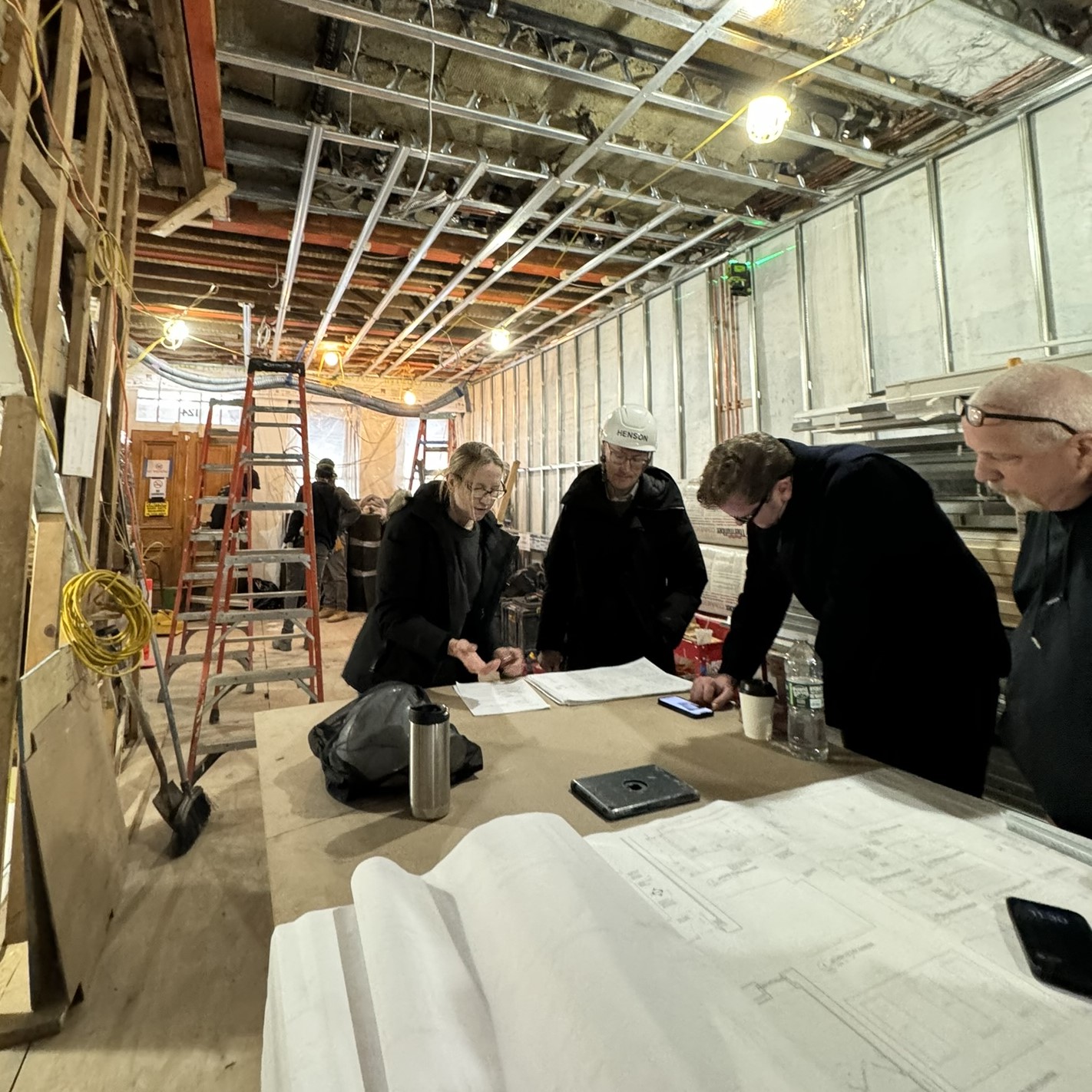Henson Architecture can help you prepare for Local Law 97 Compliance
In a 2020 interview with the New York Chapter of the American Institute of Architects, Scott Henson highlighted Henson Architecture’s commitment to retrofitting existing buildings and minimizing their carbon footprints. This aligns with our broader mission of achieving carbon neutrality, promoting environmental sustainability, and reducing the carbon footprint of the built environment. Our expert team brings years of experience in delivering sustainable, green building solutions that support the economy and protect the environment.
As we progress through 2024, retrofitting your building to reduce energy consumption and greenhouse gas emissions is essential. Buildings account for over one-third of global energy use. In New York City, buildings contribute to more than two-thirds of all carbon emissions, underscoring the importance of reducing greenhouse gas emissions.
Henson Architecture is here to guide you through compliance with Local Law 97 (LL97), which aims to reduce greenhouse gas emissions from buildings by 40% by 2030 and to achieve carbon neutrality by 2050. Our team combines in-depth knowledge of architecture, engineering, and design to support your building’s seamless transition.
Understanding LL97 Compliance
The Climate Mobilization Act (CMA), which was passed into law in 2019 by the NYC City Council, includes Local Law 97 (LL97), one of the most ambitious building emissions legislations globally to date. LL97 mandates that most buildings with a gross floor area exceeding 25,000 square feet adhere to strict greenhouse gas emissions limits, affecting over 50,000 buildings in New York City. These laws represent significant rulemaking aimed at transforming urban infrastructure.
To avoid penalties and financial risk, building owners must submit an annual emissions intensity report, prepared by a registered design professional. This report details data on the amount of energy the building used per square foot, supporting accountability and legal compliance. Non-compliance or failure to file accurate reports can result in substantial financial repercussions.
Measuring Carbon Emissions Under LL97
The carbon emissions released during a building’s operation are measured using occupancy-based emissions factors. Local Law 97 establishes annual carbon emission caps, accompanied by fines for non-compliance. Techniques such as carbon offset programs and emissions mitigation strategies can play a role in maintaining compliance.
Penalties and Fees
- $268 for each metric ton over the cap, and $0.50 per square foot per month for failing to file a report.\
- Providing false information can result in penalties of up to $500,000, underscoring the importance of good faith and accurate auditing.
Compliance with LL97 requires a comprehensive approach, including detailed engineering calculations and verification of greenhouse gas emissions. By adopting energy-efficient practices and utilizing analytics and compliance software, property owners can mitigate risk and support decarbonization in urban environments.
Lower Energy Costs and Avoid Fines
At Henson Architecture, we combine our passion for retrofitting historic buildings with modern sustainability strategies. While preserving older buildings is inherently sustainable, enhancing their performance through deep energy retrofits—such as electrification, passive house techniques, and cogeneration—ensures compliance with LL97.
Owners can also benefit from significant reductions in heating and cooling costs through energy conservation measures. Additionally, tapping into incentive programs and emerging tools, such as carbon trading, Energy Star certification, LEED, and feasibility studies, can further reduce the cost burden. Improved accessibility and long-term durability add to the value of these efforts. Collaboration with innovative companies and leveraging every available resource empowers property owners to succeed.
Are You Prepared?
Buildings that exceed their permitted carbon emissions in 2024 will be fined in 2025 and annually thereafter. With regulations tightening in 2030, proactive measures are crucial. Our team evaluates your properties and other assets for energy inefficiencies, providing a customized action checklist tailored to your goals, schedule, and budget. A tailored feasibility study can help clarify upgrade priorities and investment paths.
We’ll help you navigate NYC and federal incentive programs, optimizing system performance while maximizing ROI. With a network of experts and resources, we conduct comprehensive energy analyses that include:
- Insulating and air sealing\
- HVAC optimization and electrical upgrades\
- Lighting improvements, mechanical system enhancements, and window improvements
These upgrades not only reduce emissions but also ensure safer, more resilient buildings that align with today’s climate and environmental demands. We also offer ongoing education via webinars and provide answers to frequently asked questions about compliance and energy planning.
Henson Architecture is Your Solution
Reducing operating emissions and enhancing energy efficiency are crucial to our decarbonization strategy. At Henson Architecture, we provide the tools, information, and resources you need to achieve LL97 compliance without compromising financial prudence. Whether you’re a real estate owner, property manager, or developer in New York, contact our company today to discover how we can help reduce your carbon footprint, enhance safety, and stay ahead of evolving legislation.
Contact us to begin your journey toward a compliant, efficient, and future-ready building.







